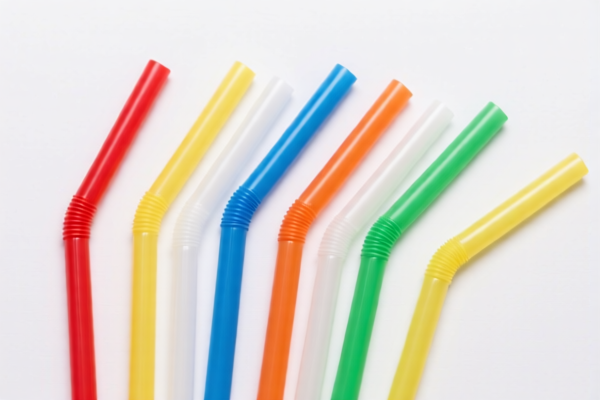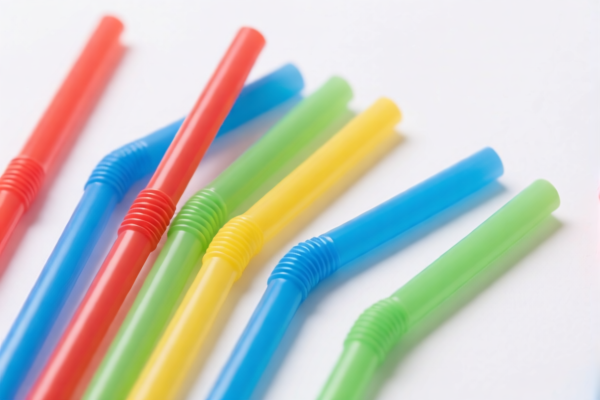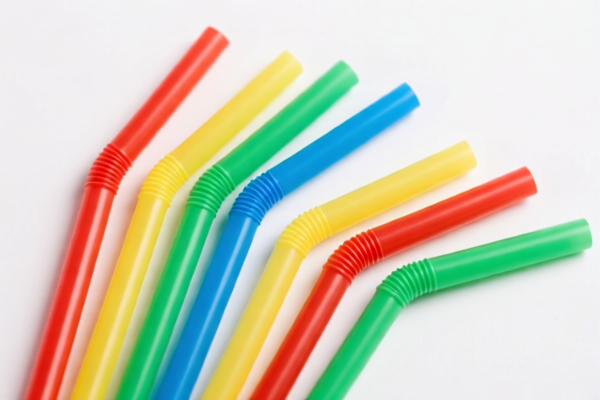| HS Code | Official Doc | Tariff Rate | Origin | Destination | Effective Date |
|---|---|---|---|---|---|
| 3923500000 | Doc | 60.3% | CN | US | 2025-05-12 |
| 3923900080 | Doc | 58.0% | CN | US | 2025-05-12 |
| 3926901000 | Doc | 40.9% | CN | US | 2025-05-12 |
| 3926909989 | Doc | 42.8% | CN | US | 2025-05-12 |




Reusable Plastic Straws
Reusable plastic straws are an alternative to single-use plastic straws, designed to reduce plastic waste. They are typically constructed from durable, food-grade plastic polymers intended for repeated use.
Material
The most common materials used in reusable plastic straws include:
- Polypropylene (PP): A robust, lightweight plastic known for its heat resistance and chemical stability. Often used for straws intended for both cold and hot beverages.
- Tritan: A BPA-free plastic copolymer offering clarity, durability, and resistance to staining and odor absorption.
- HDPE (High-Density Polyethylene): A stiffer, more rigid plastic frequently used in thicker, more substantial reusable straws.
Purpose
The primary purpose of reusable plastic straws is to provide a convenient and hygienic method for consuming beverages while minimizing environmental impact. They address the pollution caused by disposable plastic straws, which contribute significantly to landfill waste and ocean contamination.
Function
Reusable plastic straws function identically to single-use plastic straws: they facilitate the drinking of liquids, particularly those with particulate matter (e.g., smoothies, slushies) or those requiring a longer reach to avoid contact with the mouth. They offer an alternative for individuals who prefer or require a straw for drinking.
Usage Scenarios
- Everyday Beverage Consumption: Used at home, in the office, or while traveling.
- Restaurants and Cafés: Increasingly offered as an alternative to single-use straws. Some establishments may require customers to bring their own.
- Smoothies and Milkshakes: Ideal for consuming thicker beverages that are difficult to drink directly from a glass.
- Parties and Events: Provide a more sustainable option for serving drinks at gatherings.
- Individuals with Disabilities: Offer a convenient and accessible drinking aid for those with limited mobility or sensitivity.
Common Types
- Straight Straws: The most basic design, suitable for standard glasses and cups.
- Bent Straws: Offer a more ergonomic drinking angle.
- Wide Straws: Designed for thicker beverages like smoothies and milkshakes.
- Collapsible Straws: Compact and portable, often with a cleaning brush included. These typically fold or telescope for easy storage.
- Straws with Cleaning Brushes: Cleaning brushes are often included to maintain hygiene and prevent buildup inside the straw.
- Silicone-Tipped Straws: Some straws feature silicone tips for added comfort and protection of teeth.
Reusable plastic straws fall under articles made of plastics, typically used for conveyance or packing of goods, or for general use. Here's a breakdown of potentially relevant HS codes based on the provided information:
- 3923500000: This HS code covers articles for the conveyance or packing of goods, of plastics; stoppers, lids, caps and other closures. While straws aren’t strictly closures, they can be considered part of the packing process when bundling items. The total tax rate is 60.3%, comprised of a 5.3% base tariff and a 25.0% additional tariff, increasing to 30.0% after April 2, 2025.
- 3923900080: This code encompasses other articles for the conveyance or packing of goods, of plastics; stoppers, lids, caps and other closures, of plastics. If the straws are not specifically considered part of the primary packing (e.g., used for individual beverage consumption rather than bundling), this code may be applicable. The total tax rate is 58.0%, with a 3.0% base tariff and a 25.0% additional tariff, rising to 30.0% after April 2, 2025.
- 3926901000: This HS code covers other articles of plastics and articles of other materials of headings 3901 to 3914; other: buckets and pails. While not directly applicable to straws, it's included for completeness as it represents other plastic articles. The total tax rate is 40.9%, consisting of a 3.4% base tariff and a 7.5% additional tariff, increasing to 30.0% after April 2, 2025.
- 3926909989: This code covers other articles of plastics and articles of other materials of headings 3901 to 3914; other: other. This is a broad category for plastic articles not specifically classified elsewhere. The total tax rate is 42.8%, with a 5.3% base tariff and a 7.5% additional tariff, increasing to 30.0% after April 2, 2025.
According to the provided reference material, the HS code options related to 'reusable plastic straws' are limited, with only the following 4 found.
It is important to note that the additional tariff is scheduled to increase from 25.0% to 30.0% after April 2, 2025, impacting the total tax rate for all listed HS codes.
Customer Reviews
No reviews yet.